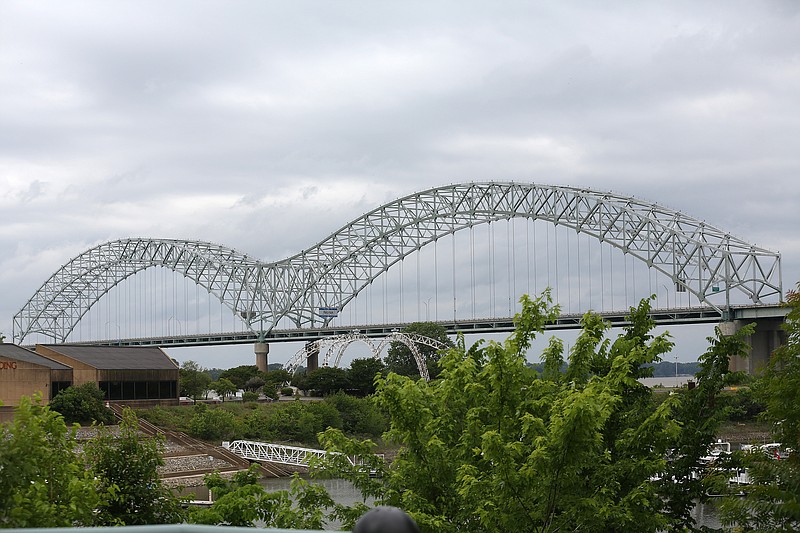The first of two construction phases required to re-open the Interstate 40 bridge over the Mississippi River between Arkansas and Tennessee at Memphis was finished Tuesday, the Tennessee Department of Transportation announced.
"Phase one is complete," the agency said in its daily update.
The contractor, Kiewit Infrastructure Group of Omaha, Neb., working 24 hours a day over a five-day period that began Friday, completed attaching two fabricated steel plates weighing 9 tons to each side of the fractured beam.
The plates will stabilize the Hernando De Soto Bridge to allow for permanent repairs, the department said.
Design plans for the second phase, which involves removing and replacing the damaged piece, are still being finalized, according to the update and may produce a pause of an indeterminate amount of time.
Kiewit personnel "will be preparing for phase two, which includes cleaning up the work site and extending the platform," according to the update.
The I-40 bridge has been closed since May 11, when a routine inspection uncovered a fracture in one of two 900-foot steel-box beams that help support one of the bridge spans.
The crossing is one of two for motor vehicles connecting Arkansas and Tennessee at Memphis. The I-40 bridge was opened to traffic in 1973 and is considered the "new bridge." All vehicle traffic crossing the Mississippi at Memphis is being routed onto the Interstate 55 bridge, which opened in 1949, until all repairs and inspections to the newer bridge are completed.
When both bridges were open, each carried about 45,000 vehicles daily, according to the Arkansas Department of Transportation. The Tennessee Transportation Department counted 65,000 vehicles crossing the I-55 bridge on May 18.
The "old" bridge appears to be able to better handle the increased traffic after a re-striping project designed to improve traffic flow was completed.
"Traffic data comparing Monday, May 17 and Monday, May 24, shows a 40% reduction in travel time on I-55," according to the Tennessee Transportation Department update. "A 47-minute delay was reduced to 27 minutes."
The I-55/E.H. Crump Boulevard interchange also was closed to help improve traffic flow. Online traffic maps show that the interchange will be closed until Monday, Memorial Day. The end date suggested the I-40 bridge would be opened Tuesday.
Alas, no one should get their hopes up, according to Nicole Lawrence, the spokeswoman for the Tennessee Transportation Department.
"Those end dates mean nothing," she said. "They are just place cards."
Complicating factors
The traffic disruption caused by the closing of the I-40 bridge also has been complicated by other factors, including the end of school, the start of the summer travel season and the upcoming Memorial Day weekend. Before the re-striping, the delays have been costing the trucking industry $2.4 million per day, according to the Arkansas Trucking Association.
Meanwhile, inspectors continue to review drone video footage of the I-55 bridge and continue to find nothing concerning, Monday's update said.
The Arkansas Department of Transportation is responsible for inspecting both bridges under an agreement with the Tennessee Transportation Department.
The latter is responsible for the maintenance of the bridges. All costs are evenly split between the two departments.
The Arkansas agency asked its Tennessee counterpart to inspect the I-55 bridge following the dismissal of the leader of the Arkansas inspection team after evidence suggested he didn't thoroughly inspect the bridge in two instances.
The team inspected the bridge's superstructure and substructure in September 2019 and September 2020 and didn't detect the fracture, according to the Arkansas Transportation Department.
Video drone footage from a separate inspection of the bridge's suspension and cable system in May 2019 that was reviewed earlier this month showed the fracture was evident then. Evidence from a kayaker's photograph suggests it was visible as early as 2016.
An outside team hired to inspect the suspension and cable system discovered the fracture on May 11 "by happenstance," according to Lorie Tudor, the top official at the Arkansas Transportation Department.
The department now is re-inspecting other bridges for which the team led by the fired inspector was responsible.
